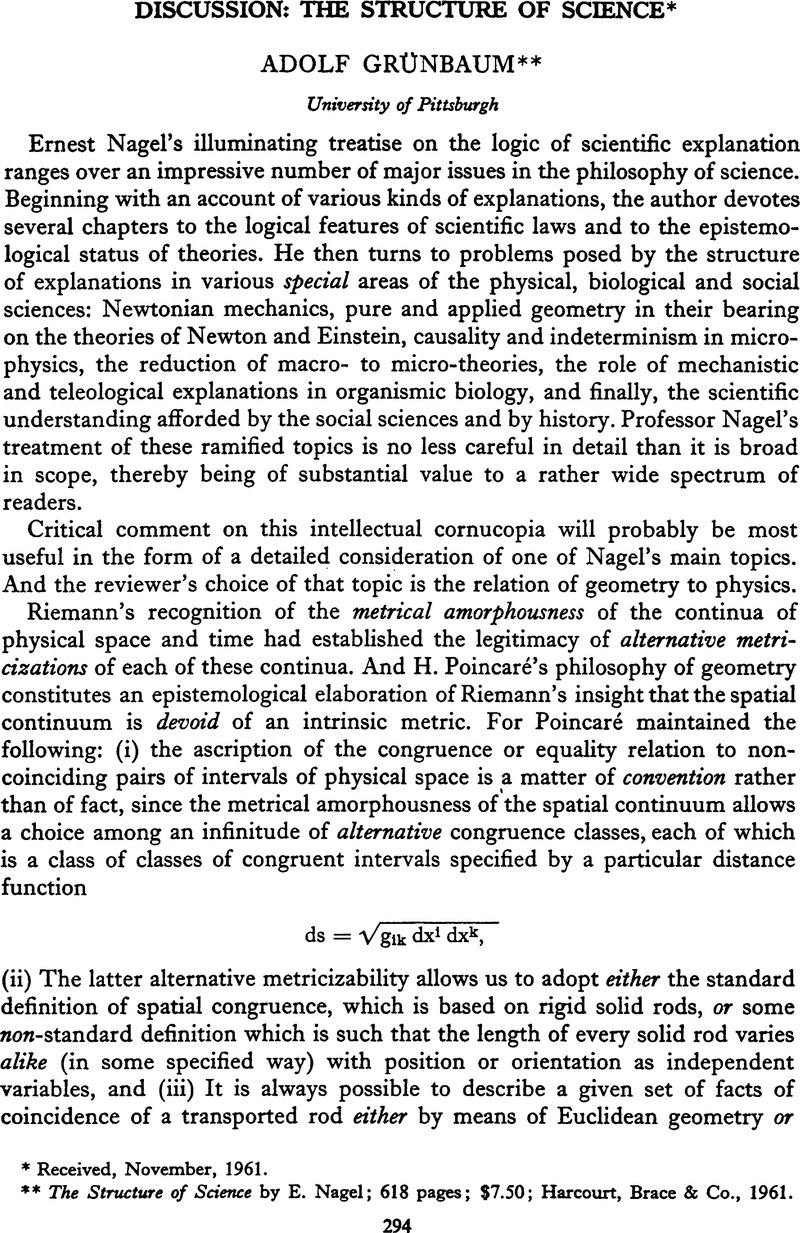Published online by Cambridge University Press: 14 March 2022

The Structure of Science by E. Nagel; 618 pages; $7.50; Harcourt, Brace & Co., 1961.
1 Cf. H. Reichenbach, The Philosophy of Space and Time, Dover Publications, New York, 1958, §§6 and 8; hereafter, this work will be cited as “PST.”
2 Cf. H. Poincaré, The Foundations of Science, The Science Press, Lancaster, 1946, pp. 75–77.
3 H. Reichenbach, The Rise of Scientific Philosophy, The University of California Press, Berkeley, 1951, p. 133.
4 H. Poincaré, The Foundations of Science, The Science Press, Lancaster, 1946, p. 81.
5 Ibid., p. 235.
6 For a discussion of the important logical differences between the linguistic interdependence between geometry and optics espoused by Poincaré and their epistemological (inductive) interdependence as championed by P. Duhem and Einstein, cf. A. Grünbaum, “Geometry, Chronometry and Empiricism,” Section 6, Minnesota Studies in the Philosophy of Science, vol. III, University of Minnesota Press, Minneapolis, 1962.
7 Under the assumed conditions as to the parallactic findings, the optical paths might still be interpretable as Euclideanly-related geodesics on a new metricization, but only if the customary angle congruences were abandoned and changed suitably as part of the remetricization. In that case, the paths of light rays would be straight lines even in the Euclidean description obtained by the new metricization, but the optical laws involving angles would have to be suitably restated.